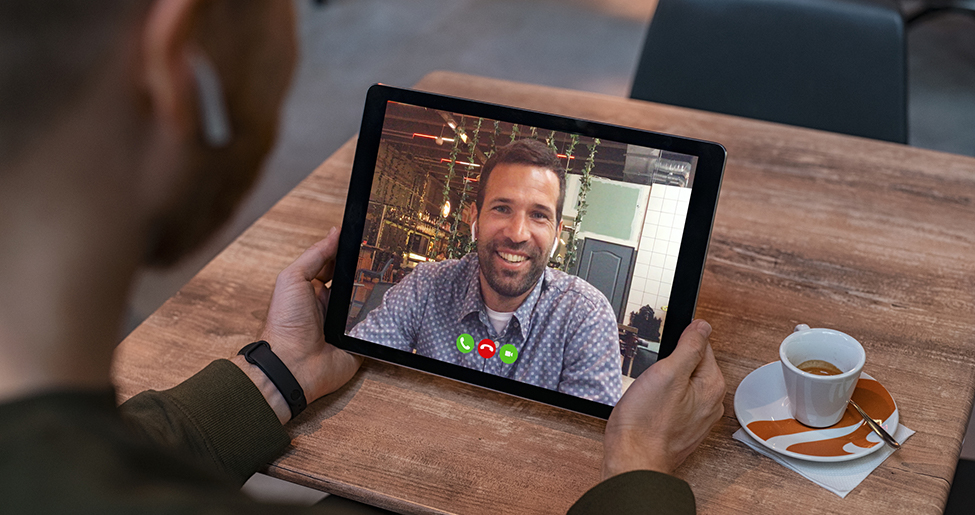Article menu
According to the disability charity Scope, disabled people are almost twice as likely to be unemployed than non-disabled people. That’s because they’re trying to stand out in an already saturated market that’s inherently stacked against them. Of course, that’s not to say that charities aren’t trying to make an effort, but there are things that you probably didn’t even realise get in the way of convincing disabled workers to apply.
That stark reality is that disabled people are hugely under-represented in employment. They want to work, but fear they will be discriminated against in the recruitment process because of accommodations that need to be made.
So how can we, as employers, ensure we’re encouraging and supporting disabled workers throughout the recruitment process?

Discriminating against any candidate is against the law
The Equality Act 2010 states it clearly—you cannot discriminate against someone because of a disability. That pertains to disabilities you know they have and disabilities you think they might have (otherwise known as discrimination by perception). If you aren’t sure what classifies as discrimination, it’s best to err on the side of caution.
Ultimately, there are six different types of disability discriminations:
- Direct discrimination – when you treat someone less favourably than another candidate because of their disability.
- Indirect discrimination – when you have a particular policy that has a worse impact on disabled workers than non-disabled workers.
- Failure to make reasonable adjustments – this includes access to jobs, education and services.
- Discrimination arising from disability – when you treat someone badly because of something connected to their disability, such as time off for medical appointments.
- Harassment – when a disabled worker feels humiliated, offended or degraded.
- Victimisation – when you treat someone badly after they’ve made a complaint.
Our advice? Make it clear in your recruitment that you’re open to all types of candidates applying and do what you can to accommodate disabled workers wherever possible. If you think something you’re doing might be discriminatory, do whatever you can to change that practice.
How to become Disability Confident
Did you know that 10.21 million working-age people in the UK have a disability? If you’re not investing in ways to attract that talent pool, you’re missing out. It might be time to sign up for the government’s Disability Confident Scheme.
With over 19,000 members, Disability Confident is making a huge impact in changing behaviours and cultures in businesses across the UK. The scheme is designed to help you:
- challenge attitudes towards disability
- improve your understanding of disability
- remove barriers that exist for disabled candidates and those with long-term health conditions
- ensure disabled candidates have the opportunity to fulfil their potential.
The scheme consists of three levels. During this process, you’ll agree to Disability Confident commitments and identify actions that will make a difference for disabled jobseekers. Then, you’ll assess your organisation and report on your progress. Once you’ve completed the scheme, you’ll receive a badge on your website for all job seekers to see. This signals your commitment to and investment in giving disabled candidates a fair shot.

Remote working and job opportunities in the post-pandemic era
The Covid-19 pandemic caused a ‘remote revolution’, and one of the biggest benefits has been the increase in the number of home-based positions.
Far more organisations are now open to the idea of long-term remote working. This is hugely positive for disabled workers, as it provides more opportunities for roles they may not have previously had access to. So if you’re thinking of posting a job, ask yourself: Does this role really need any office presence or can it be done completely remotely?
Be careful of promising one thing and then delivering another. Many charities have hybrid positions that are mostly home-based, but require travel into the office once a week, or month, for meetings. If that’s the case, don’t advertise your role as remote. This can be misleading, especially for disabled jobseekers who were considering applying but know they can’t travel into the office, even only occasionally, once hired.
The CharityJob Salary Report 2024 revealed that demand for remote roles is eight times higher than for on-site roles. So, our advice is to be open to the idea of making a role completely remote. Not only will it diversify the pool of candidates who apply, but it will also provide more opportunities for amazing job seekers with disabilities who could be the perfect fit for your charity.

How to ensure your recruitment is inclusive of disabled workers
To make your recruitment more accessible, you need to make sure disabled workers aren’t deterred from applying. There are several practical steps your charity can take to ensure better disability inclusion in both your recruitment and day-to-day operations. The first is making diversity training available to all staff. And, more importantly, making sure your management team are able to have open discussions about diversity and disability and are equipped to make reasonable adjustments for their direct reports.
Then, take the time to review your recruitment processes to ensure any potential barriers for disabled candidates are mitigated and removed.
Purple, a UK charity dedicated to bringing businesses and disabled people together, suggest considering the following when recruiting for your next role:
- Make sure the language used in your advert is accessible, avoid jargon and be precise about essential requirements.
- Use at least font size 12.
- Think about using specialist disability recruitment portals when you advertise your roles.
- Be open about your approach to disability.
- Don’t make any assumptions about who does and doesn’t have a disability.
- Consider the level of flexibility in receiving information from candidates—i.e. could people send in a video application rather than a written one?
- Ensure the interview takes place in an accessible location to minimise requests for adjustments.
- Consider using disabled people (with a range of impairments and health conditions) to test your end-to-end recruitment process and provide feedback.

Disability can be hard to define
And remember, disability can be hard to define. It could be a physical disability, a learning disability, a mental health condition or an invisible condition. But if a candidate shows talent potential and a clear ability to excel in the role, then it’s worth being encouraging and accommodating to ensure equal opportunity for all.
Need more advice on how to build a more inclusive recruitment process? Check out our series of fairer recruitment blogs.
Post a job with CharityJob and receive applications from diverse candidates. Learn how to effectively advertise your job to attract the perfect candidate.
This post was originally published in 2020. We’ve updated it to ensure relevance and to reflect the current recruitment landscape.
Tags: disability in recruitment, diversity and inclusion, diversity hiring guide





